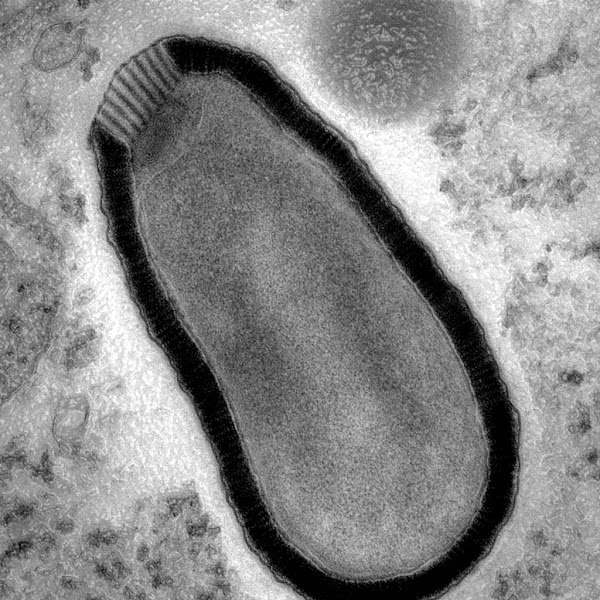What is Vibrio vulnificus, the ‘flesh-eating’ bacteria
Vibrio vulnificus is a type of Vibrio bacteria that is commonly found in warm saltwater environments, such as estuaries and coastal waters. It can also be found in shellfish, particularly oysters, that live in these environments.
Vibrio bacteria are a group of Gram-negative, facultatively anaerobic, rod-shaped bacteria that are found in marine and estuarine environments. There are over 100 known species of Vibrio bacteria, some of which are pathogenic and can cause illness in humans and animals.
Most species of Vibrio bacteria are motile, meaning they can move around in their environment with the help of flagella. They are also capable of forming biofilms, which are communities of bacteria that stick to surfaces such as rocks or the shells of marine animals.
Some species of Vibrio bacteria are important in the marine ecosystem, playing a role in nutrient cycling and as a food source for other organisms. However, other species, such as Vibrio cholerae and Vibrio parahaemolyticus, can cause severe gastrointestinal illnesses in humans. Vibrio vulnificus, another species of Vibrio bacteria, can cause serious wound infections and sepsis in people with weakened immune systems.
In 1976, the pathogen known as Vibrio vulnificus was initially discovered from a series of blood culture samples sent to the Centers for Disease Control and Prevention (CDC) in Atlanta. It was originally classified as a "lactose-positive vibrio". Later on, it was referred to as Beneckea vulnifica before being renamed Vibrio vulnificus in 1979 by J. J. Farmer.
Why is Vibrio vulnificus called the flesh eating bacteria
Vibrio vulnificus is sometimes called the "flesh-eating bacteria" because in rare cases, it can cause a severe and rapidly progressing skin infection called necrotizing fasciitis. This happens when the bacteria enter the body through an open wound or cut, and then rapidly multiply and spread, releasing toxins that destroy surrounding tissue. The infection can lead to tissue death and extensive damage to muscle, skin, and underlying tissue, which may require surgical removal or amputation.
It's important to note that necrotizing fasciitis caused by Vibrio vulnificus is very rare, and most people who are infected with the bacteria do not develop this severe complication. However, for individuals with weakened immune systems or pre-existing medical conditions such as liver disease, diabetes, or cancer, the risk of developing severe complications from Vibrio vulnificus infection is higher. It is important to seek prompt medical attention if you suspect you have been exposed to Vibrio vulnificus, especially if you have an open wound or cut.
What infections does V. vulnificus cause
Vibrio vulnificus can cause several types of infections in humans, depending on the mode of exposure and the individual's immune status.
The most common infections caused by V. vulnificus are skin and soft tissue infections, which can range from mild, localized cellulitis to more severe and rapidly spreading necrotizing fasciitis. These infections are usually caused by exposure of open wounds to contaminated water or seafood.
In some cases, V. vulnificus can also cause septicemia, which is a life-threatening bloodstream infection. Septicemia occurs when the bacteria invade the bloodstream, leading to the rapid onset of symptoms such as fever, chills, low blood pressure, and septic shock.
Individuals with weakened immune systems, such as those with liver disease or HIV/AIDS, are at increased risk of developing severe infections from V. vulnificus. In these individuals, the bacteria can also cause gastroenteritis, a type of food poisoning characterized by diarrhea, vomiting, and abdominal pain.
According to the Centers for Disease Control and Prevention (CDC), most people become infected by eating raw or undercooked shellfish, particularly oysters.
Where is V. Vulnificus found
Vibrio vulnificus is a bacterium that is commonly found in warm coastal waters, particularly in the Gulf of Mexico and along the Atlantic and Pacific coasts of the United States. The bacteria can also be found in some estuaries and brackish ponds, which are areas where freshwater and saltwater mix.
According to a study published in 2023 by the University of East Anglia (UEA) in the UK, the number of V. vulnificus infections in the East Coast of the United States has increased significantly over the past three decades. This region is known to be a global hotspot for such infections, with cases rising from 10 to 80 per year during the study period.
In addition, cases of V. vulnificus infections have been found further north each year. While these cases were rare north of Georgia in the late 1980s, they can now be found as far north as Philadelphia.
The study suggests that if current trends continue, infections may spread to encompass major population centers around New York by 2041-2060. With an aging and growing population that is more susceptible to infection, annual case numbers could potentially double.
Moreover, by 2081-2100, V. vulnificus infections may be present in every Eastern US state under medium-to-high future emissions and warming scenarios.
Recent cases of Vibrio vulnificus infections
- In 2022 following Hurricane Ian, Lee County, Florida saw a sharp rise in infections and deaths from V. vulnificus. By October 18, 2022, four deaths and 29 illnesses had been recorded since landfall of the hurricane in late September.
- In 2021, several cases of Vibrio vulnificus infections were reported in Florida, USA. One case resulted in a man having his leg amputated after he contracted the infection through a cut on his foot while fishing in the Gulf of Mexico.
- In 2020, a man in North Carolina, USA, died after contracting a Vibrio vulnificus infection from eating raw oysters.
- In 2019, a woman in Texas, USA, died after contracting a Vibrio vulnificus infection from eating raw oysters.
- In 2018, a man in Australia died after contracting a Vibrio vulnificus infection from eating raw seafood.
According to the CDC, about 80% of infections occur between May and October when water temperatures are warmer.
Diagnosis and Treatment of Vibrio vulnificus infections
Diagnosis of vibriosis typically involves clinical evaluation of symptoms and recent food and water exposure history. A clinician may suspect the infection if the patient presents with symptoms such as watery diarrhea, abdominal cramps, nausea, vomiting, fever, chills, and in severe cases, sepsis or shock. The clinician may also inquire about the patient's recent seafood consumption, especially raw or undercooked oysters, and exposure to seawater or brackish water through activities such as swimming or fishing.
Laboratory tests are used to confirm the diagnosis of vibriosis. Samples of stool, wound discharge, or blood are collected and cultured to detect the presence of Vibrio bacteria. These samples may also be tested for bioluminescence, a property exhibited by some strains of Vibrio vulnificus.
Treatment of vibriosis is generally supportive, with mild cases often resolving on their own without intervention. Patients are advised to drink plenty of fluids to replace the fluids lost through diarrhea and prevent dehydration. However, in severe or prolonged cases, antibiotics may be used to treat the infection. Antibiotics do not decrease the duration or severity of illness, but they may help to prevent complications and reduce the risk of death in severe cases.
It is important to seek medical attention promptly if you suspect you have vibriosis or have been exposed to Vibrio bacteria. Individuals with weakened immune systems, including those with liver disease or HIV, are at higher risk of developing severe illness from vibriosis and should take extra precautions to avoid exposure.











